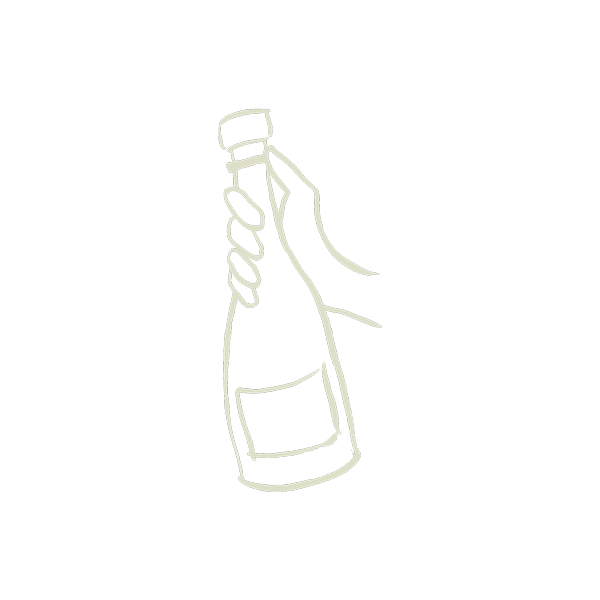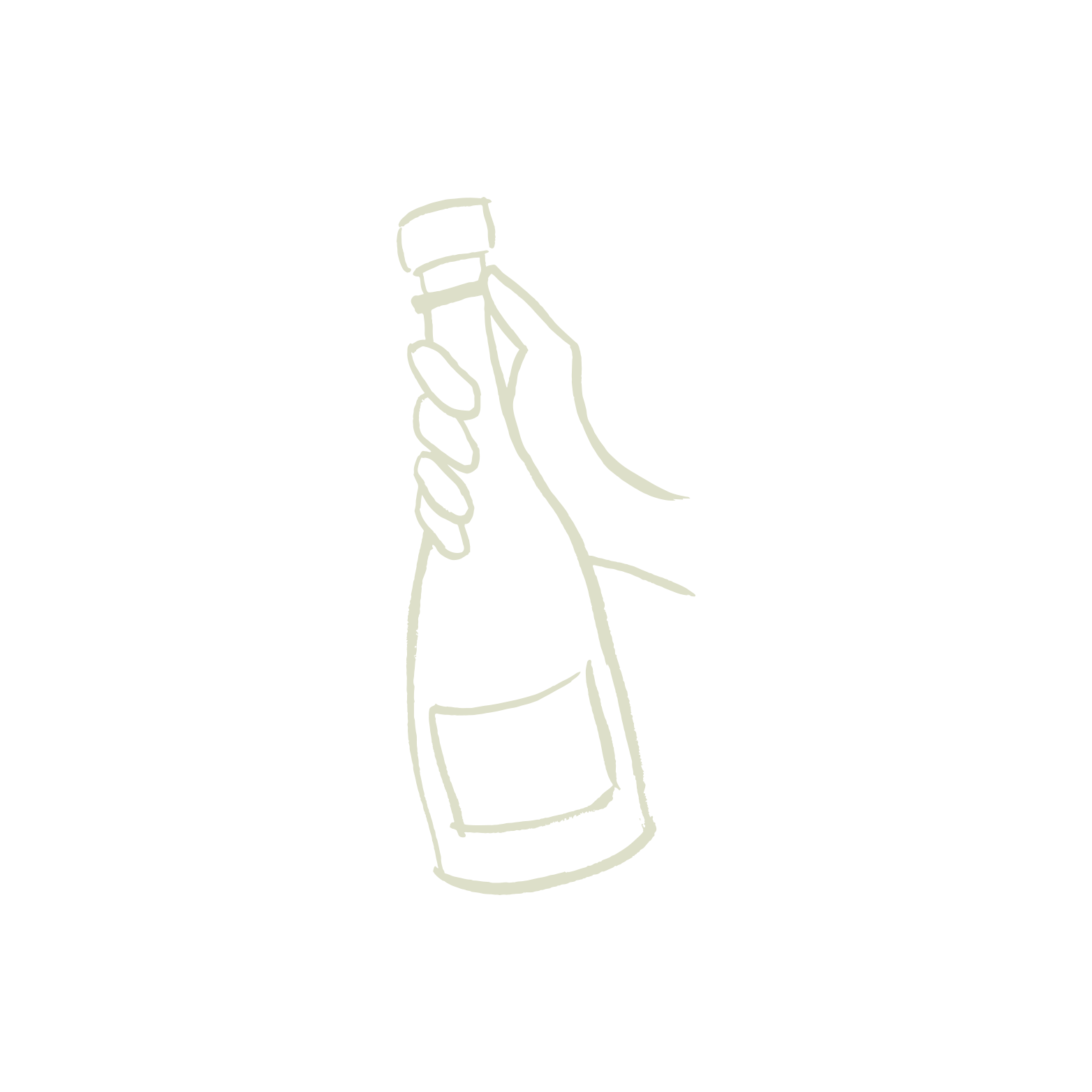How to Read a Champagne Label

Like the bubbles inside, the label affixed to a bottle of Champagne is unlike anything else. An expression of the unique customs and traditions of the region, it provides a wealth of information — if you know how to decipher the code.
As Champagne experts, we look at Champagne labels every day. And we’re excited to teach you everything we know about how to read those enigmatic labels like a pro. Let’s break it down!

Lesson no. 1: If the label says “Champagne,” you’re in the right place.
Perhaps you’ve seen versions of the meme or heard someone say “It's only Champagne if it's from the Champagne region of France. Otherwise, it's just sparkling wine.” Well, it’s true.
Though Champagne winemakers had been fighting for more than a century to defend their unique, and arguably superior, bubbles against imitations and misuse by other sparkling wine producers outside the region, Champagne was officially granted a controlled designation of origin (AOC) in 1936.
Today, by law, sparkling wine can only be called Champagne if it is made in the Champagne region of France with the grapes grown there. The AOC designation comes with an assurance that the wine in the bottle was made by a producer that abides by the strict rules and regulations outlined by the laws of the Champagne wine region. For example, all Champagne grapes must be harvested by hand, and the bottled wine must spend at least 15 months maturing in the winemaker’s cellars before it is released. Rules like these guide every step of the winemaking process from the vineyards to your glass.

Lesson no. 2: The producer puts their name front and center.
When you examine the Champagne label, the name of the producer is typically — but not always — the largest text you’ll notice. Big house names like Moët & Chandon and Veuve Clicquot are instantly recognizable.
For grower Champagne, the producer is often someone’s name or initials. Hyphenated names such as Didier-Ducos or Hervieux-Dumez commonly indicate the merging of two winemaking families and their respective vineyards by marriage or partnership.

Lesson no. 3: Champagne, it takes a village.
Because Champagne, and specifically, grower Champagne is a unique expression of a particular time and place, the village where it’s made and where exactly its grapes are grown is of the utmost importance — and it can tell you a lot about the wine and what to expect before it even crosses your lips.
For example, producer A. Levasseur is located in the village of Cuchery as indicated on the label. With a quick internet search, you’ll discover Cuchery is in the Vallée de la Marne sub region of Champagne, and it is known for soil that is rich in clay, chalk and limestone. The village is also known for its prolific production of pinot meunier. Armed with these village-specific details, you can make an educated guess that A. Levasseur cuvées will likely be very high-quality and pinot meunier-dominant with lots of ripe fruit notes.
On the front of the label, you’ll see the name of the village printed somewhere at the bottom, below the producer and the name of the cuvée. You can also typically find the producer’s street address on the back label. Fun fact: A. Levasseur has named one of their cuvées for the street where the Levasseur family estate is located — Rue du Sorbier.

Lesson no. 4: Name that style.
Aside from the producer and the village from which the Champagne came, another key bit of information is the style of the cuvée. Here are some descriptors you are likely to see:
- Premier Cru or Grand Cru — terms used to describe the status and location of villages where grapes are grown in Champagne. Grand Cru is considered to be the best tier, and Premier Cru is the second best tier. Learn more here.
- Prestige — a term used to convey that the winemaker considers this to be their top wine or an exceptional cuvée due to its vintage, location, age or growing conditions.
- Réserve — a designation that means some or all of the wine in the cuvée has been aged or stored from previous harvests. Typically used in non-vintage cuvées, réserve wine helps enhance finesse and complexity in a blend.
- Millésime — French for “vintage,” meaning all the wine in the cuvée has been harvested from a single year. Winemakers only deem a cuvée a millésime when it is an exceptionally good vintage. These bubs need to rest and mature for at least three years in the cellars before they can be enjoyed. Vintage cuvées tend to have well-integrated flavors and delicate finesse.
- NV — an abbreviation for “non-vintage.” You will see this on the label if the Champagne is a blend of grapes from different harvests during different years. Sometimes NV is not listed at all. Non-vintage bubbles have to age for at least 15 months, and their fruit flavors are a bit more expressive than their vintage counterparts.
- Blancs de Blancs — French for “white of whites,” meaning that it is Champagne made of 100 percent chardonnay.
- Blanc de Noirs — French for “white of blacks,” meaning that it is Champagne made exclusively with the clear juice of dark-skinned pinot noir and/or pinot meunier grapes.
- Rosé — Pink-colored Champagne made with one of two techniques: rosé de saignée (allowing contact between the juice and dark-skinned grapes) or rosé d’assemblage (blending red still wine and white still wine together before fermentation). Learn more here.

Lesson no. 5: You won’t see “dosage” on the label, but it’s there.
Each wine has a certain amount of natural sugar from its grapes, but in Champagne, winemakers add dosage (an amount of still wine and sugar) during the last step of the winemaking process to lend balance and emphasize the unique flavors of the wine. Some winemakers choose not to add dosage to allow the quality and characteristics of their grapes to shine through.
Dosage is indicated by its varying degrees: doux (containing the most dosage, 50 g/l) all the way down to brut nature (containing zero dosage, 0 g/l). Dry Champagne — brut, extra brut and brut nature — is the only Champagne you’ll find at fatcork. In fact, most of our Champagnes contain less than 7 g/l.

Lesson no. 6: Two little letters reveal something big (or small).
All Champagne labels — on the front or the back — include two small letters that indicate the type of producer that made the wine. There are seven types of possible producers divided into three main categories:
Maisons or big houses are the most recognized producers of Champagne. These houses, like Veuve Clicquot, Dom Pérignon and Bollinger, tend to blend for consistency. They make most of their cuvées the same each time, so when you open a bottle, it tastes like you would expect it to taste. Maisons source their grapes from smaller growers all over Champagne, and they sometimes grow some of the grapes themselves. Maisons account for 87 percent of Champagne imported to the U.S.
- ND or Négociant-Distributeur is a company that sells a finished Champagne that they did not produce or grow themselves.
- NM or Négociant Manipulant is a house that buys all or some of their grapes from other growers. Anything with less than 94 percent estate fruit must be labeled NM.
- MA or Marque d’Archeteur is a “brand of the buyer” and is a finished Champagne that is bought by a larger retailer that sells it under their name.
Growers are people who grow the grapes and also make the wine. These bubbles are terroir-specific, more niche and sometimes harder to find — in a grocery store or wine shop, that is. You can always find them at fatcork!
- RM or Récoltant-Manipulant refers to small family-run grower-producers who make Champagne exclusively from grapes that grow in their own vineyards.
- SR or Société de Récoltants is a group of two or more growers that share a common production site. Some winemakers often don’t have room or the resources to have all their own equipment, and it is more environmentally friendly to share resources.
- RC or Récoltant-Coopérateur is a grower that has a co-op make their Champagne for them from grapes that they grow.
Coopertifs are Champagne brands, usually from a particular village, that pool their resources to make Champagne, so they don’t have to each own their own equipment. Typically, there is a head winemaker that makes all the Champagne.
- CM or Coopérative-Manipulant is a group of winemakers that pool their grapes and bring them to a single production facility to make Champagne. Then, they sell their portion of the Champagne under their own name.

Lesson no. 7: Bottle size matters.
Champagne bottles come in all different sizes. It will be obvious in person, but if you’re shopping online, here’s what to look for:
375 mL = a half bottle of Champagne (a little more than two 5-ounces glasses)
750 mL = a standard-sized bottle of Champagne (five 5-ounce glasses)
1.5 L = a magnum. The equivalent of two standard-sized bottles (10 5-ounce glasses)
3 L = a Jeroboam. The equivalent of two magnums or four standard-sized bottles ( 20 5-ounce glasses)

Lesson no. 8: Don’t leave the back label behind.
At fatcork and on many of the Champagne bottles you find at restaurants, the back label includes information about the importer and/or the distribution — good to know if you like the wine. They will likely import other bottles you would enjoy.
In France on bottles you buy directly from the producer, the back label will most likely include interesting or required information about the wine and the producer.
______________________________________________________________________
Phew, that’s a lot of information, but now you are armed with everything you need to pick out the perfect bottle of Champagne. Also remember, never be afraid to ask questions, it’s all in the never ending process of learning. Happy choosing!
Cheers,
Team fatcork!

